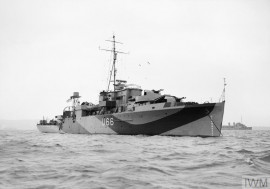 3 Boa Allied Forces Image Starling
3 Boa Allied Forces Image Starling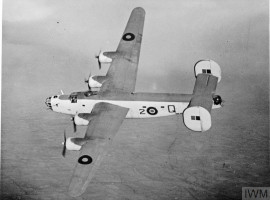 3 Boa Allied Forces Image Liberator
3 Boa Allied Forces Image Liberator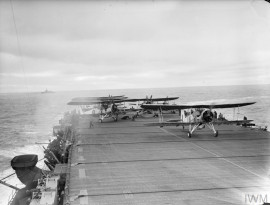 3 Boa Allied Forces Image Swordfish
3 Boa Allied Forces Image Swordfish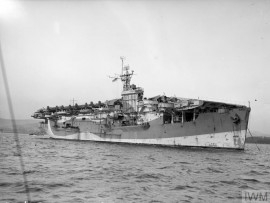 3 Boa Allied Forces Image Ameer
3 Boa Allied Forces Image Ameer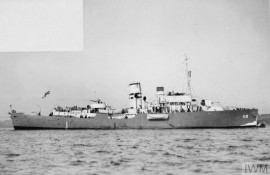 3 Boa Allied Forces Image Geranium
3 Boa Allied Forces Image Geranium
Picking out the most important classes of ships from the Battle of the Atlantic is an exercise fraught with difficulty, as dozens of types of ship had some part to play.
Having said that, there are certain classes that spring to mind when the campaign is mentioned, so – in no particular order – we will take a closer look at those ships, on both the Allied and Axis sides.
We will start with a ship type that no longer exists in the Royal Navy, the sloop, and in particular the very effective U-boat killers of the Black Swan class and variants.
The sloops of World War 2 were designed as escort vessels, being somewhat slow for a warship (some as slow as 16 knots, though the Black Swan class could manage 19), with relatively light armament but a longer range than escorts such as corvettes.
Some pre-war types were specifically designed for service in the warmer climes of the Far East or Mediterranean, so winter operations in the North Atlantic were a wretched affair for their ship’s companies.
Looking specifically at the Black Swan and modified Black Swan ships, they were effective both as convoy escorts and as U-boat killers, having the sensors and weaponry (predominantly depth charges) to carry out both roles with a high degree of aggression.
Just over 30 of the two classes were built for the Royal Navy between 1939 and 1945; six were lost during the war, and between them they were responsible for, or played a part in, the destruction of around 30 U-boats.
Amongst the most famous of the wartime Black Swans was HMS Starling, at one time commanded by the legendary Capt Johnnie Walker, which had a hand in the sinking of 11 U-boats.
British wartime corvettes were something of an emergency measure, a stop-gap to help escort convoys while the destroyer-building programme on both sides of the Atlantic gathered pace.
The classic corvette was the Flower-class, a pugnacious breed of ship which revelled in the dichotomy between their gentle names and the toughness of the vessels themselves and the men which sailed in them.
The Flowers were based on the design of a whaling ship the Southern Pride, built on Teesside by Smiths Dock Company, and were originally intended to protect North Sea convoys, but their long range and quick, cheap build process meant that they soon became a mainstay in the Battle of the Atlantic, where despite their slow speed and relatively light armament they proved durable and effective.
Being short, broad and relatively small (less than 1,000 tons) they were also notoriously uncomfortable for those on board – they were poor at handling foul weather (it was often said they would roll on wet grass) and sailors on board were often cold and wet through as water came through hatches, condensation dripped from metal surfaces (and jets of icy seawater had a habit of blasting up from the pipe that led from the heads to the open air outside the hull).
They also suffered a chronic lack of space – they were eventually manned by twice as many sailors as they were designed for, leaving insufficient room for men to sleep and a lack of storage.
Almost 300 of the class served during the war for Allied navies, and 36 were lost. Although their main role was to act as a deterrent to U-boats, protecting merchant ships in convoys, the class is credited with taking part in the destruction of more than 50 Axis submarines, 47 of them U-boats.
It is thought that around half of all Allied convoy escort vessels during the Battle of the Atlantic were Flower-class ships.
Amongst the more illustrious of the class were HMS Sunflower, which sank two U-boast single-handedly and shared a third kill, and HMS Gladiolus, which also played her part in three U-boat kills and was involved in four convoy battles, but was herself lost while hunting a U-boat on convoy SC 48 from Canada to Liverpool in October 1941.
A third class of ship which was pivotal in the Battle of the Atlantic was the escort carrier, of which there were several different classes, but most of which had the same characteristics of being small (for an aircraft carrier), slow and relatively cheap to build, attracting the nickname of ‘Woolworths carriers’.
Often based on commercial ship hulls, they could be produced quite quickly and were thus more expendable than the much larger Fleet carriers, and they were not so heavily armed.
Unable to keep pace with standard warships, they were of little use in fleet actions, but as well as providing on-the-spot air cover for convoys they also proved useful in amphibious landings, providing air support to advancing troops, and were widely used to ferry aircraft around the world.
As anti-submarine tactics developed throughout the Battle of the Atlantic, such carriers also became more effective in Escort and later Support Groups, aggressive U-boat hunting flotillas that helped turn the tide of the Battle.
The UK operated some 45 escort carriers, the vast majority of which were built for the Royal Navy in the United States as part of the 14,000-ton Bogue-class programme, which comprised the Attacker and Ruler (or Ameer) classes in the Royal Navy.
They could generally carry up to 24 aircraft – initially commonly Fairey Swordfish, later Grumman Avengers – on operations, almost doubling that number when acting purely as a ferry by filling both the hanger deck and flight deck with aircraft.
Turning to aircraft, there are two that have iconic status in terms of the Battle of the Atlantic.
The first is the Fairey Swordfish, known as the Stringbag (not for its appearance, but for the fact it could carry a wide range of weapons, and thus resembled a string shopping bag), which was already practically obsolete at the outbreak of war.
They were extremely durable aircraft, however, and the slow, cumbersome Swordfish proved its worth time and again in the Atlantic as well as other theatres, in a number of roles including torpedo bomber and dive bomber.
Some 2,400 Swordfish were built, and they sank a greater tonnage of Axis shipping than any other type of aircraft during the war. They also proved very effective anti-submarine platforms in the Battle of the Atlantic, dropping depth charges or attacking surfaced submarines with rockets.
They could easily operate from the smaller escort carriers as their slow take-off and landing speed (somewhere around 60 knots) meant the ship did not generally have to steam into the wind.
Finally, we look at an American aircraft that helped tackle to deadly mid-Atlantic gap – the Consolidated B-24 Liberator, something of an unsung hero in the Atlantic campaign.
A four-engined heavy bomber, the Liberator was never a favourite of aircrew, having a reputation as a difficult plane to handle, but its long range helped swing the balance of power in the Battle of the Atlantic.
The first Liberators entered service with the RAF in 1941, and Coastal Command’s VLR (Very Long Range) version meant U-boats in the middle of the Atlantic were no longer safe from a surprise air attack, particularly when similar patrols started operating from the Eastern seaboard of the United States and Canada.
Liberators were responsible for the destruction of at least 93 U-boats during the Battle of the Atlantic.
Our images today from the extensive Imperial War Museum collection (https://www.iwm.org.uk/collections) show these iconic ships and aircraft:
© IWM A 15582 is of U-boat killer par excellence, Black Swan-class sloop HMS Starling, pictured in March 1943
© IWM A 6416 is of Flower-class corvette HMS Geranium pictured in 1941
© IWM A 21339 is of Ruler or Ameer-class escort carrier at Greenock in January 1944
© IWM A 24498 shows Fairey Swordfish aircraft on board escort carrier HMS Striker on an anti-submarine patrol in June 1944
© IWM CH 11800 shows an anti-submarine Consolidated B-24 Liberator GR Mk V (BZ877) of No 86 Squadron RAF, based at Ballykelly, Co Londonderry, in 1943
This series is by no means a comprehensive review of the Battle of the Atlantic, which was a colossal clash – in terms of casualties alone more than 100,000 men are thought to have died as a direct result to the battle, and more than 4,000 vessels were sunk, while many times more those numbers were involved.
Instead, we have picked out some of the more important or thought-provoking features of the campaign, and would encourage you to read further on individual aspects such as eye-witness accounts from escort ships (both fiction and non-fiction) and the role of Enigma.